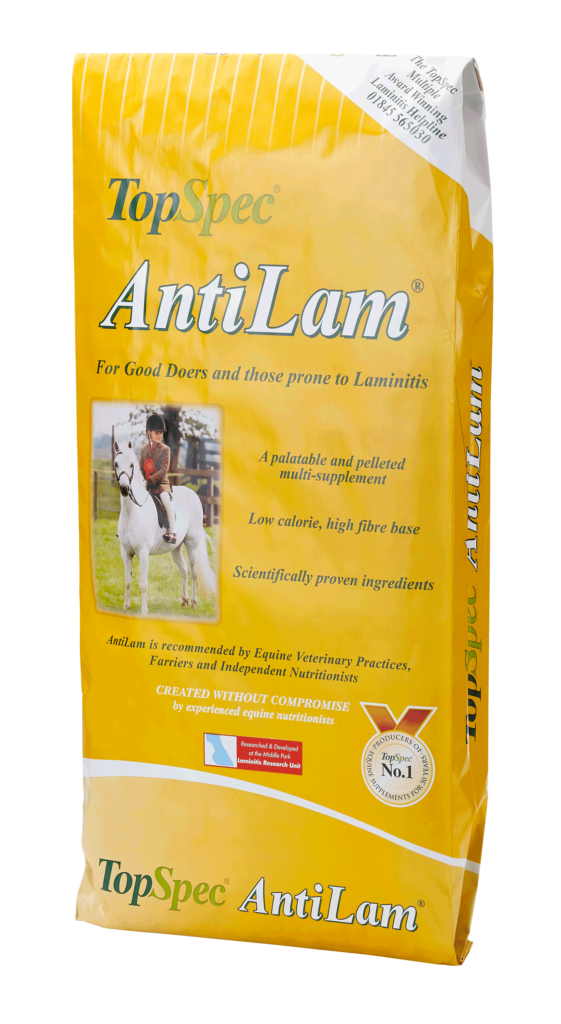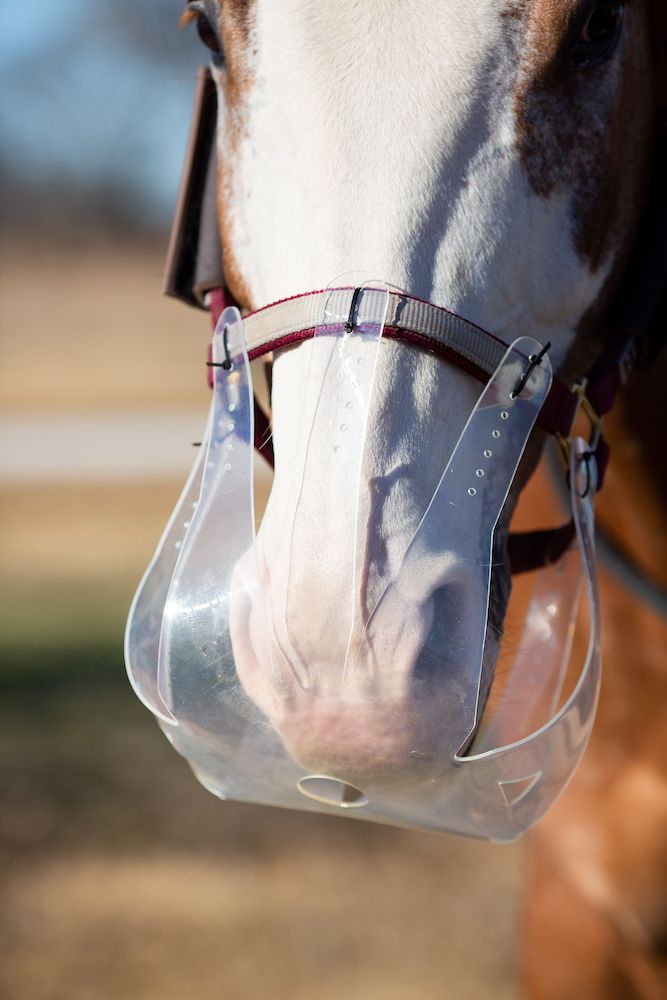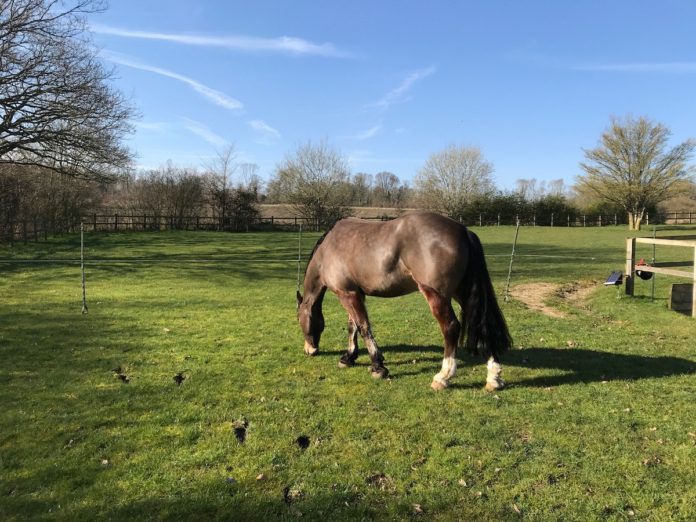Prolific grass and underworked equines are a recipe for laminitis, says ETN.
Since coronavirus brought a halt to anything but local low-key riding, most horses and ponies are doing very little.
Many are turned out 24/7, eating grass instead of burning calories with Easter holiday activities.
Combine that with the currently warm, sunny weather following a mild, wet winter, and you have text-book laminitis-inducing conditions.
Leading feed and supplement manufacturers offer a range of products suitable for horses prone to or at risk of laminitis. Suppliers of electric fencing – useful to restrict access to grass – are reporting high demand.
Grazing muzzles are another useful item to offer to customers just now. The latest designs have improved hugely on the concept of slowing eating rates.
Suspected laminitis cases require immediate veterinary attention and therefore qualify under Covid-19 regulations for an emergency visit. Farrier attention is also likely to be needed as a welfare issue.
If ever there was a case of prevention being better than cure, laminitis is it. But current circumstances are not making it easy for owners.
LAMINITIS NEWS
Strip grazing does work…
Using strip grazing to manage horses’ weight is the subject of new published research by independent equine nutrition consultant Annette Longland in collaboration with Spillers via the Waltham Equine Studies Group.
The study compared three restricted grazing practices during the UK grass growing season. Three groups of four similar ponies were placed in paddocks with herbage yield equivalent to 1.5% (dry weight) of the ponies’ bodyweight per day for 28 days.
They were assigned to one of three grazing practices: no other restriction; a lead fence placed across the width of the paddock to allow fresh grass to be accessed each day by moving it 1/28th of the paddock length daily; strip grazed with both a lead and a back fence with the back fence being moved the same distance as the lead fence daily.
The ponies were weighed and body condition scored weekly. Weight gains were significantly higher for the ponies without any grazing restriction; but there was no significant difference in weight gain for those with the lead fence and those with the lead fence and back fence.
“The ponies with gradual access to pasture via strip grazing had significantly lower bodyweight gains than their counterparts who were allowed free access to the entire 28-day herbage allocation,” said Clare Barfoot RNutr, marketing and research and development director at Spillers.
“If [owners are] planning on turning their horses out to grass during this current situation, or at any other time, it’s certainly worth considering installing a strip grazing fence and moving it once a day.”
A plan of action
Most overweight ponies, and some overweight horses, are susceptible to laminitis, as are horses and ponies diagnosed with Equine Metabolic Syndrome (EMS), Insulin Dysregulation (ID) and/or Cushings (PPID), say the nutritionists at TopSpec.

TopSpec AntiLam is a pelleted, very low-calorie multi-supplement designed to provide nutritional support for those prone to, being treated for, or recovering from laminitis.
Long term trials at Middle Park Laminitis Research Unit showed that horses and ponies on restricted/poor grazing do not gain any weight when fed AntiLam. It can also be used as part of a calorie-controlled diet when weight loss is required.
AntiLam should be fed on its own with forage such as a late-cut hay or unmolassed chop. An overweight 12hh pony, on box-rest because of laminitis, should receive 125g of AntiLam plus 1kg of TopChop Lite twice a day, say nutritionists. In addition, 2kg (one flap) of hay soaked for about 12 hours should be fed daily.
Having recovered from laminitis, ponies can stay on AntiLam permanently or switch to TopSpec Lite Feed Balancer after a year, provided they are not obese.
Muzzle made more comfortable
Grazing muzzles are a well-established way of restricting grass intake.

But with the potential to rub, get caught up or inhibit drinking, they can have drawbacks.
This is especially true for owners who can’t check their horses two or three times a day – a problem for many under the current coronavirus lockdown.
The ThinLine Flexible Slow Feed Grazing Muzzle, distributed in the UK by KM Elite, claims to be softer, lighter and less confining than some other styles.
Made from a pliable material, it is soft on the teeth and lips, well-ventilated and designed for quick release should it catch on a hazard in the field.
Starvation isn’t the answer…
Horses and ponies on restricted grass intake require additional nutritional support to remain healthy.
Laminaze from NAF has over 40 ingredients combining gut support with targeted nutrients. It comes in a palatable formula to maintain hoof health and improve the diet.
Prebiotics and live probiotics are included, plus antioxidants to support the liver. Bio-available sulphur (MSM) is recommended for healthy hoof growth and strong sulphur bonds within the laminae.
Strip grazing photo credit: Sarah Shephard

















